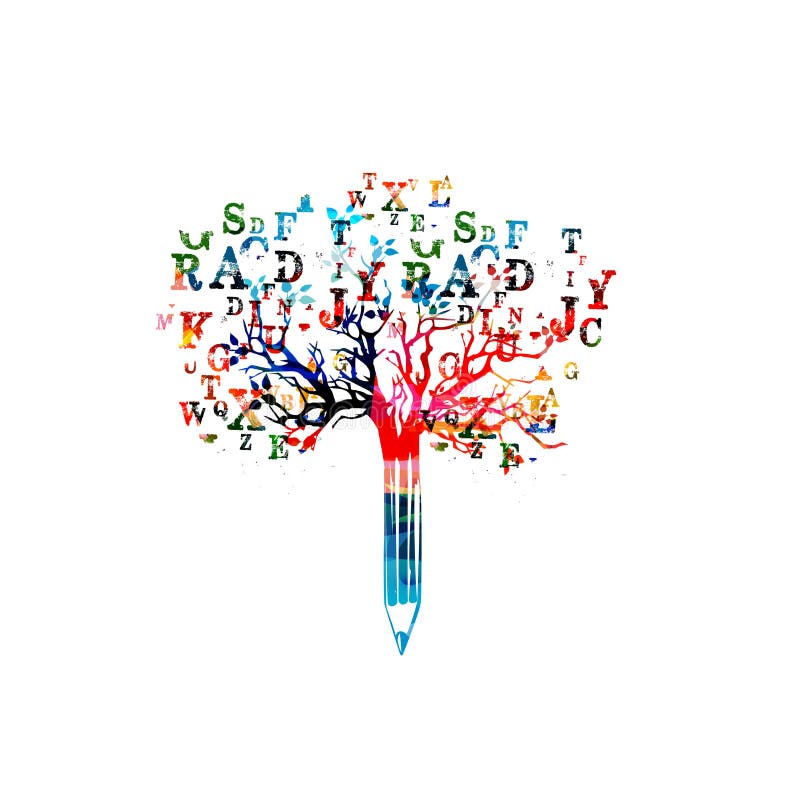
Discover the key to unlocking your artistic potential with 'Unleash Your Muse: Top 10 Song Writing Exercises to Boost Creativity.'
This expertly crafted guide dives into a collection of exercises designed to ignite your imagination and enhance your songwriting skills. From freewriting to collaborative songwriting, each exercise is carefully curated to inspire and push the boundaries of your creativity.
Whether you're a seasoned songwriter or just starting out, this article will provide you with the tools and techniques to set your muse free and create truly remarkable music.
Exercise 1: Freewriting
In the exploration of the subtopic 'Exercise 1: Freewriting', it is essential to understand the power of uninhibited expression.
This exercise serves as a powerful tool for exploring creativity and overcoming writer's block. Freewriting involves writing continuously for a set period of time, without concern for grammar, punctuation, or coherence. The goal is to let thoughts flow freely and tap into the subconscious mind, allowing for unexpected ideas and connections to emerge.
By removing the constraints of structure and self-criticism, freewriting encourages a sense of freedom and openness that is conducive to creative breakthroughs. It allows writers to bypass their inner critic and dive into the depths of their imagination.
Through freewriting, one can unravel hidden thoughts and emotions, leading to fresh perspectives and innovative ideas. This exercise is particularly effective for those experiencing writer's block, as it helps to loosen the grip of self-doubt and release the creative flow.

Exercise 2: Collaborative Songwriting
Collaborative songwriting offers numerous benefits for musicians and songwriters. It provides an opportunity to tap into different perspectives and ideas, leading to a more diverse and innovative finished product. Additionally, collaborating with others can help to improve one's songwriting skills and push creative boundaries.
To ensure a successful collaboration, it is essential to establish clear communication, mutual respect, and a shared vision for the project.
Benefits of Collaboration
One significant advantage of engaging in collaborative songwriting exercises is the increased potential for generating a multitude of innovative ideas. When multiple minds come together, each individual brings their unique perspectives, experiences, and talents to the table. This diversity fosters a creative environment where ideas can be freely shared and built upon, leading to the creation of truly original and captivating songs.
Collaboration allows for a dynamic exchange of ideas, as each person contributes their own strengths and expertise. This synergy often sparks new ideas and pushes the boundaries of creativity. By pooling together different skill sets, collaborators can tap into a wider range of musical styles and techniques, resulting in a richer and more diverse body of work.
Furthermore, collaboration encourages experimentation and risk-taking. When working alone, songwriters may be hesitant to step outside their comfort zones. However, in a collaborative setting, individuals are more likely to push themselves and explore new territories, leading to unexpected and exciting musical discoveries.
Tips for Successful Collaboration
Effectively navigating the intricacies of collaborative songwriting requires open-mindedness and effective communication among all participants. Here are three tips for effective communication and building trust in a collaborative environment:
Active Listening: Paying attention and actively listening to your collaborators' ideas and input is crucial for successful collaboration. It shows respect and fosters a sense of trust and understanding.

Clear and Respectful Communication: Be clear and concise when expressing your thoughts and ideas. Avoid using ambiguous language and be respectful of others' opinions and perspectives. Effective communication ensures that everyone is on the same page and can contribute to the songwriting process without feeling dismissed or misunderstood.
Constructive Feedback: Providing constructive feedback is essential for growth and improvement. When giving feedback, focus on the strengths of the song and suggest areas for improvement. Remember to be respectful and supportive, as this will encourage a positive and collaborative atmosphere.
Exercise 3: Writing From a Different Perspective
As songwriters seek to expand their creative horizons, they can enhance their skills by exploring the exercise of writing from a different perspective. Writing exercises that encourage songwriters to step outside of their own experiences and viewpoints can be highly beneficial in gaining perspective and generating fresh ideas.
By adopting a different persona or imagining oneself in someone else's shoes, songwriters can tap into new emotions, narratives, and themes that they may not have otherwise considered. This exercise allows songwriters to break free from their own limitations and explore the vast possibilities that exist within the realm of songwriting.
It can also help them connect with a wider range of listeners by writing from diverse perspectives that resonate with a broader audience. By embracing this exercise, songwriters can unlock their creativity and take their songwriting skills to new heights.
Exercise 4: Using Prompts and Word Associations
Throughout the songwriting process, songwriters can enhance their creativity by utilizing prompts and word associations. These exercises provide a structured approach to stimulate the imagination and expand the vocabulary.
Here are three ways in which using prompts and word associations can boost creativity:

Using Prompts: Prompts can be in the form of a word, phrase, or image that serves as a starting point for songwriting. They provide a foundation on which songwriters can build their ideas and explore new directions.
Word Associations to Stimulate Creativity: Word associations involve connecting words or ideas that are related or evoke a similar feeling. By making these connections, songwriters can generate unique and unexpected lyrical concepts, leading to more imaginative and engaging songs.
Expanding Vocabulary through Word Associations: Word associations also help songwriters expand their vocabulary by introducing new words and expressions into their lyrics. This not only adds depth and richness to the song but also allows for greater artistic expression.
Exercise 5: Restrictive Songwriting
Restrictive songwriting exercises can be a powerful tool to enhance creativity and foster innovative solutions.
By imposing limitations on the songwriting process, such as restricting the number of words or using specific chord progressions, songwriters are forced to think outside the box and find new ways to express themselves.
These constraints can push musicians to explore uncharted territories and tap into their creative potential, resulting in unique and compelling compositions.
Limitations Enhance Creative Output
One key method to enhance creative output in songwriting is by implementing a specific set of limitations, which is the focus of Exercise 5 in the 'Unleash Your Muse: Top 10 Song Writing Exercises to Boost Creativity' article.

This exercise encourages songwriters to embrace limitations as a means to enhance their creativity within boundaries. By placing restrictions on elements such as melody, rhythm, or lyrical content, songwriters are forced to think outside the box and find innovative ways to express themselves.
Embracing limitations can push artists to explore new ideas and experiment with different techniques, ultimately leading to unique and impactful songs. When songwriters embrace these restrictions, they open themselves up to a world of creative possibilities and allow their creativity to flourish within defined boundaries.
Constraints Breed Innovative Solutions
By embracing the challenge of working within limitations, songwriters can cultivate innovative solutions in their songwriting process. Constraints breed innovative solutions because they force songwriters to think outside the box and find creative ways to express themselves.
Embracing constraints in songwriting allows for a more focused and intentional approach, where every word and musical choice carries significance. It pushes songwriters to explore the power of limitations in creative processes and discover new ways to convey their ideas.
Setting boundaries and restrictions can actually enhance the creative output by sparking new ideas and encouraging experimentation. It forces songwriters to dig deeper and find unique ways to convey emotions and stories, ultimately leading to more authentic and impactful songs.
Exercise 6: Writing With Emotion
Infusing your lyrics with heartfelt emotion can greatly enhance the impact of your songs. Writing with emotion allows you to tap into your own experiences and connect with your audience on a deeper level. It allows you to explore vulnerability and create a sense of authenticity in your music.
Here are three ways to effectively write with emotion:

Reflect on personal experiences: Draw from your own life experiences and emotions to create lyrics that resonate with your audience. This authenticity will help establish a genuine connection with your listeners.
Use vivid imagery and metaphors: Painting a picture with your words can evoke strong emotions in your audience. By using vivid imagery and powerful metaphors, you can create a sensory experience that captures the essence of the emotions you want to convey.
Experiment with different melodies and chord progressions: The music itself can play a significant role in conveying emotion. Experiment with different melodies and chord progressions to find the perfect musical backdrop that complements the emotions expressed in your lyrics.
Exercise 7: Storytelling Through Songwriting
When it comes to songwriting, there are two main approaches that artists often take: narrative and emotion. Narrative songwriting focuses on telling a story, while emotional songwriting aims to evoke specific feelings in the listener.
Both approaches have their merits and can be powerful tools for songwriters to convey their message. By exploring the art of storytelling through songwriting, artists can tap into the rich tradition of storytelling in music and create songs that engage and resonate with their audience.
Narrative Vs. Emotion
The balance between narrative and emotion is crucial in crafting a compelling song that resonates with listeners. When it comes to songwriting, artists have the power to explore vulnerability and express personal experiences through their lyrics. However, finding the right balance between telling a story and evoking emotion can be challenging.
Here are three key considerations to achieve this balance:

Connect with the audience: A strong narrative allows listeners to connect with the story being told. By sharing personal experiences, songwriters can create a sense of authenticity and emotional resonance.
Evoke emotion: Emotion is what makes a song memorable and impactful. Songwriters can use vivid imagery, metaphors, and powerful melodies to elicit strong emotions from their audience.
Maintain coherence: While emotions can drive a song, it is important to maintain a coherent narrative structure. This ensures that listeners can follow the story and understand the message being conveyed.
Songwriting as Storytelling
Crafting a compelling narrative in songwriting requires a delicate balance between storytelling and musicality. The power of melody in storytelling cannot be underestimated. Melodies have the ability to evoke emotions and create a connection with the listener, allowing the story to come alive.
The choice of chords, rhythm, and musical structure can enhance the emotional impact of the lyrics and help convey the intended message. Techniques for conveying emotions through songwriting include the use of vivid and descriptive language, employing dynamic shifts in melody and rhythm, and leveraging the power of repetition and variation.
Exercise 8: Experimenting With Different Chord Progressions
One effective way to enhance your songwriting skills is by exploring various chord progressions. Chord progressions form the backbone of a song and can greatly influence its mood and feel. By experimenting with different progressions, songwriters can break free from conventional patterns and create unique and captivating compositions.
Here are three ways to explore unconventional progressions and incorporate different time signatures in your songwriting:

Break the mold: Challenge yourself to move beyond the typical I-IV-V progression and try out unusual chord combinations. This can add an unexpected twist to your songs and help you discover new sonic territories.
Mix it up with time signatures: Experiment with different time signatures like 5/4 or 7/8 to add complexity and intrigue to your compositions. This can create a sense of rhythmic freedom and open up new possibilities for melody and lyrics.
Embrace dissonance: Don't be afraid to incorporate dissonant chords into your progressions. These unresolved tensions can add a sense of unease or excitement to your music, making it more dynamic and memorable.
Exercise 9: Writing Lyrics First
Surprisingly, writing lyrics first can be an unconventional yet effective approach to songwriting, allowing for a deeper exploration of emotions and storytelling within the music. By starting with the lyrics, songwriters have the opportunity to dive into their emotions and express them in a raw and authentic way.
This method enhances the lyrical depth of the song, as the words become the driving force behind the melody and arrangement. It also allows for a more intentional and intentional exploration of the song's theme, as the lyrics set the tone and direction for the rest of the composition.
This exercise encourages songwriters to tap into their innermost feelings and experiences, resulting in songs that resonate with listeners on a profound level. By exploring emotions and enhancing lyrical depth, writing lyrics first can lead to the creation of powerful and meaningful songs.
Exercise 10: Analyzing and Learning From Your Favorite Songs
By closely examining and dissecting your favorite songs, you can gain valuable insights and knowledge to improve your own songwriting skills. Analyzing techniques used in these songs can help you understand the structure, chord progressions, melodies, and lyrics that make them successful. Here are three ways to analyze and learn from your favorite songs:

Study the lyrics: Pay attention to the storytelling techniques, metaphors, and imagery used in the lyrics. This can inspire you to write more impactful and meaningful songs.
Analyze the chord progressions: Take note of the chord progressions used in your favorite songs and try to understand how they create emotion and add depth to the music. This can help you experiment with different chord progressions in your own compositions.
Explore genre influences: Identify the genre influences in your favorite songs and try incorporating elements of those genres into your own music. This can help you develop a unique sound and expand your musical horizons.
Frequently Asked Questions
How Long Does It Take to Complete Each Songwriting Exercise?
The average time for each songwriting exercise varies depending on the individual's approach. Some exercises may be completed quickly, while others may require more time and contemplation. Different approaches to completing the exercises can also affect the duration.
Are There Any Specific Genres or Styles of Music That These Exercises Are More Suitable For?
When it comes to specificity in songwriting exercises, it is important to consider the various genres and styles of music. Different exercises may be more suitable for exploring specific musical genres, allowing for a greater range of creativity and expression.
Can These Exercises Be Used for Both Beginner and Advanced Songwriters?
These exercises can be utilized by both beginner and advanced songwriters. While beginners can benefit from the structured approach and guidance, experienced songwriters can find inspiration and new perspectives that enhance their creativity.
Recommended tools and online resources can greatly aid in songwriting exercises. These tools provide a wealth of information, inspiration, and guidance for both beginner and advanced songwriters. By utilizing these resources, songwriters can enhance their creativity and expand their musical horizons.

How Can These Exercises Help Overcome Writer's Block or Lack of Inspiration?
Songwriting exercises can help overcome writer's block or lack of inspiration by providing techniques for sparking creativity and ways to break through creative barriers. These exercises offer a structured approach to stimulate ideas and explore new musical possibilities.
 Writing TipsCreative WritingJournalingSketching TechniquesBuying GuidesPrivacy PolicyTerms And Conditions
Writing TipsCreative WritingJournalingSketching TechniquesBuying GuidesPrivacy PolicyTerms And Conditions
